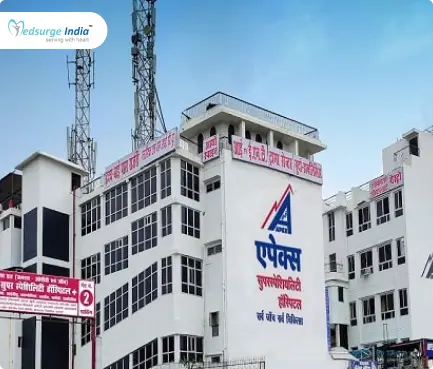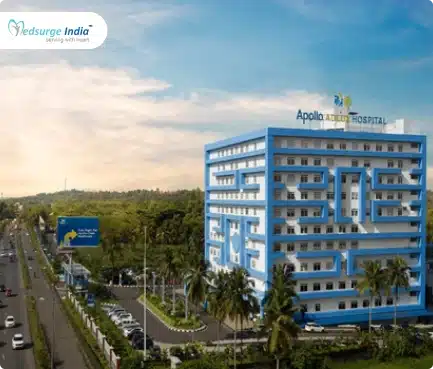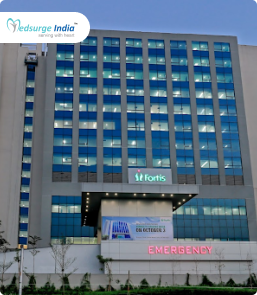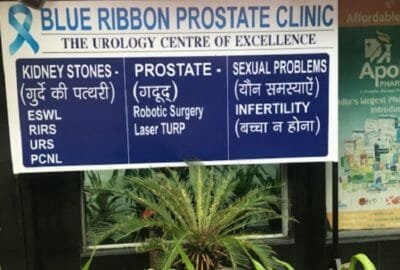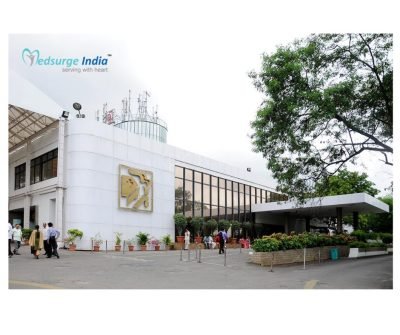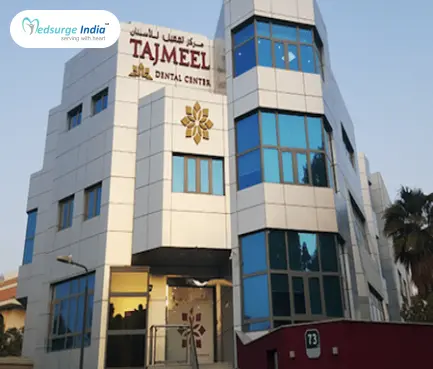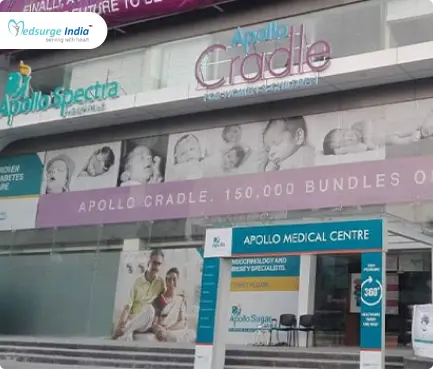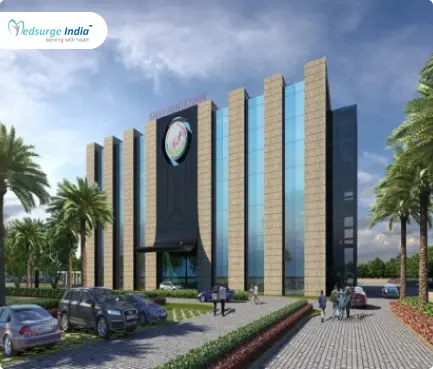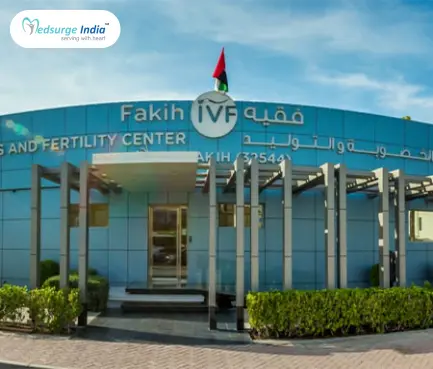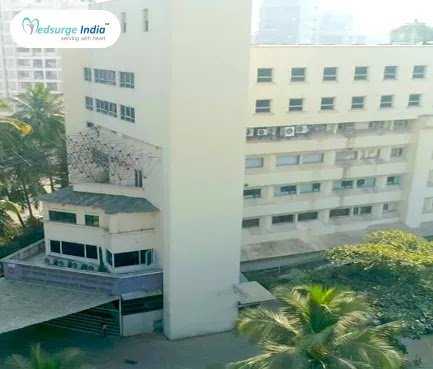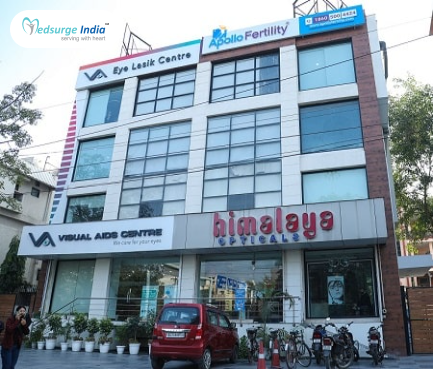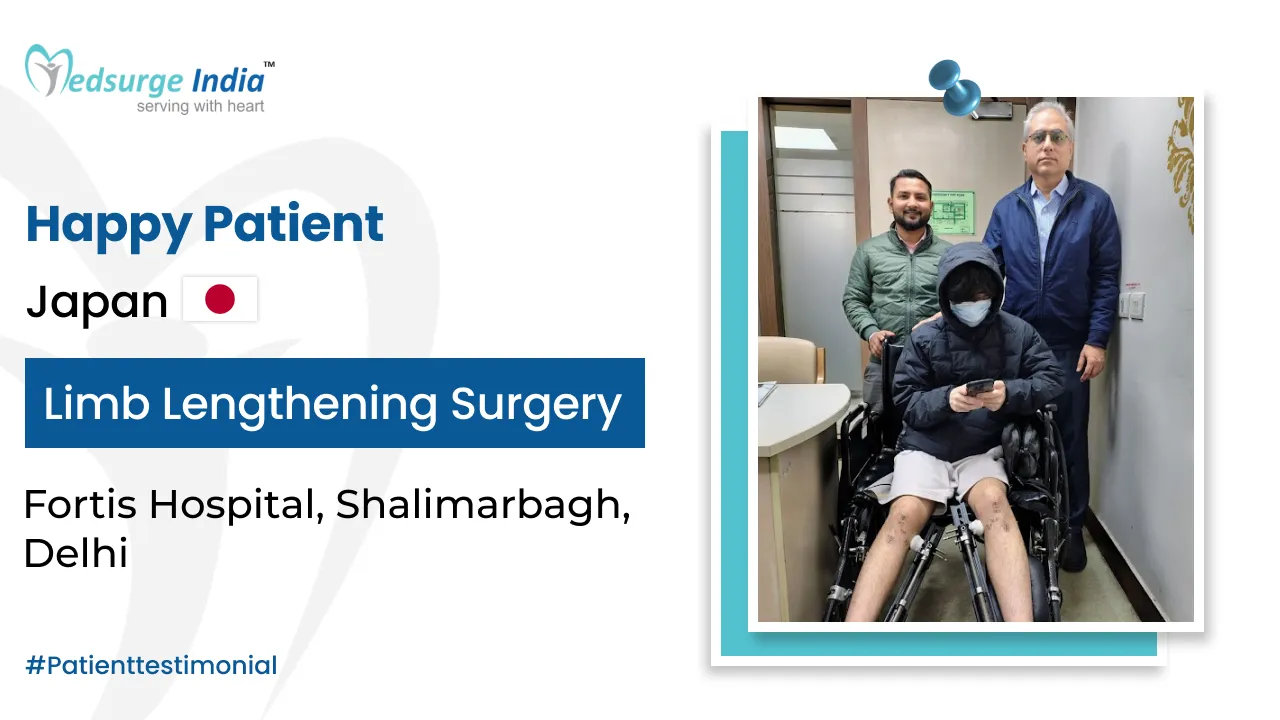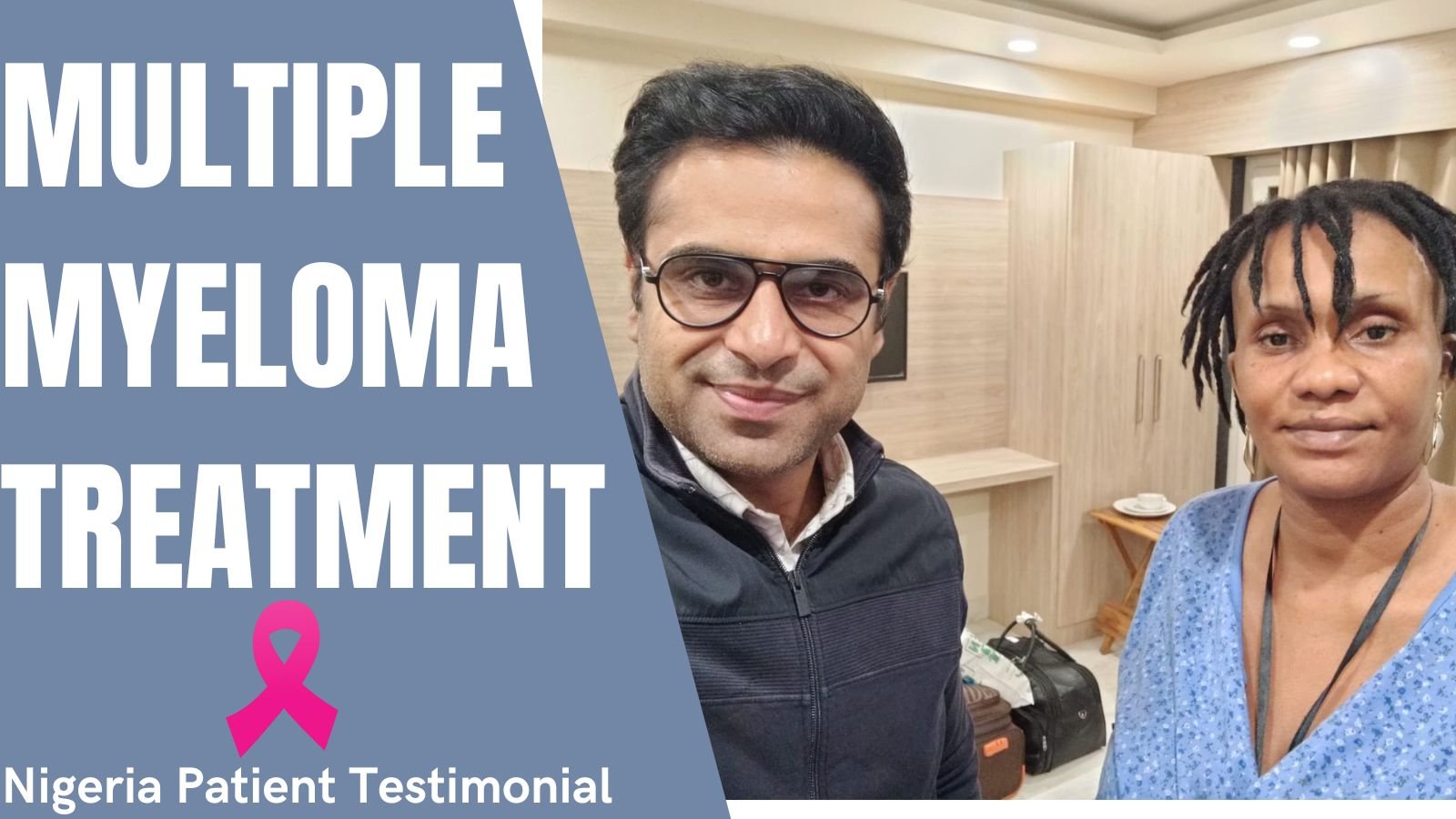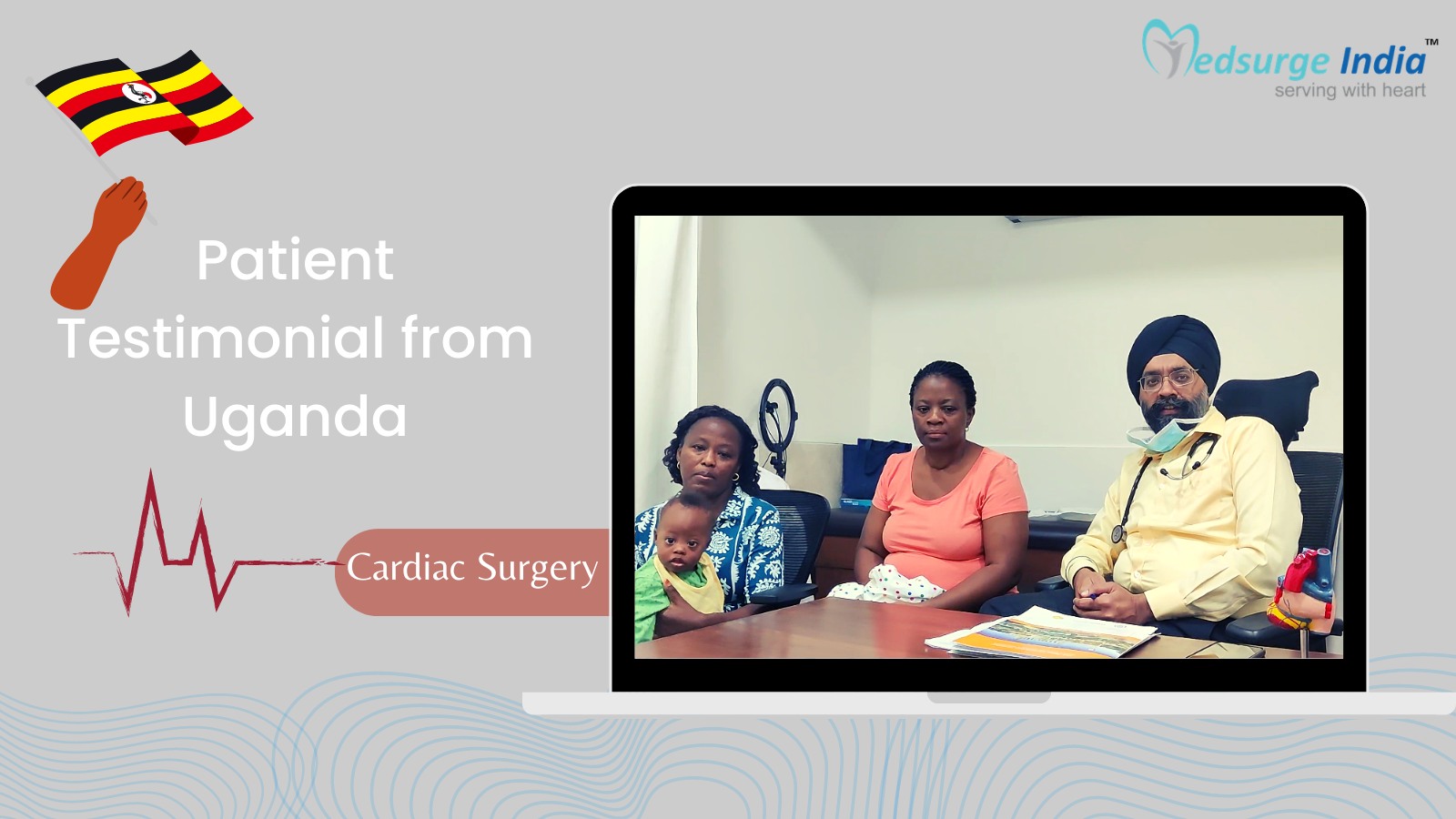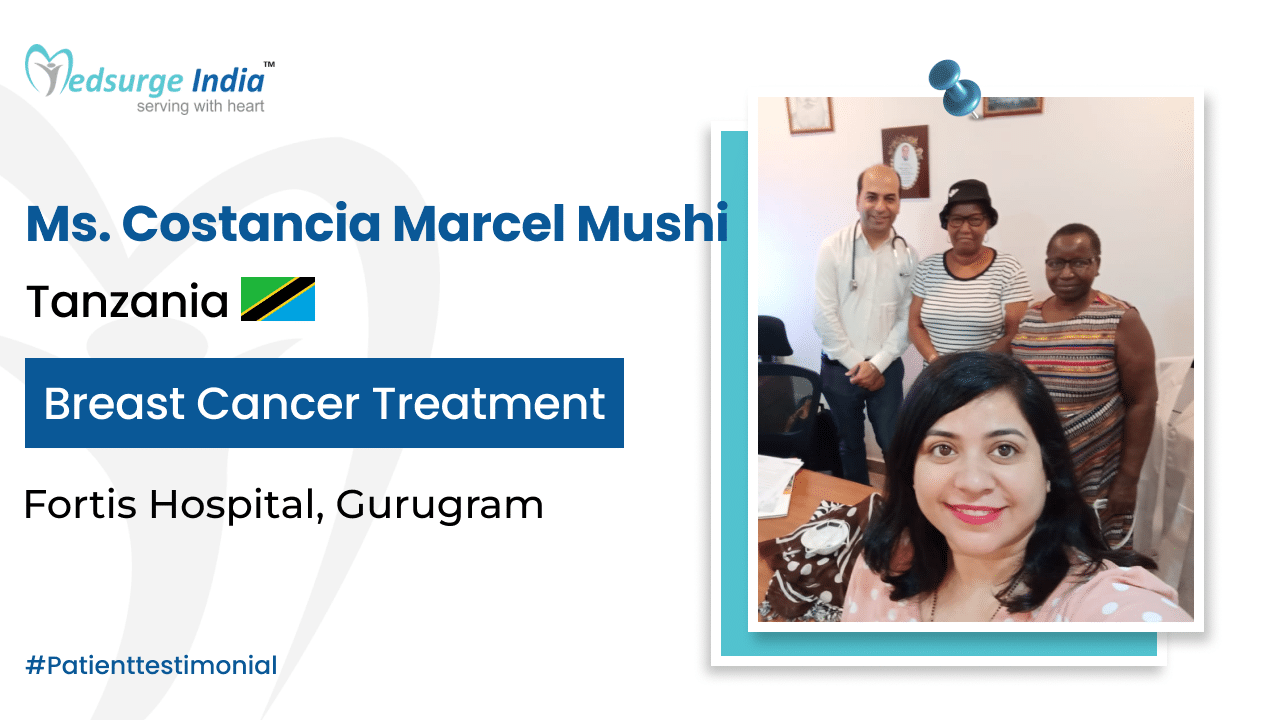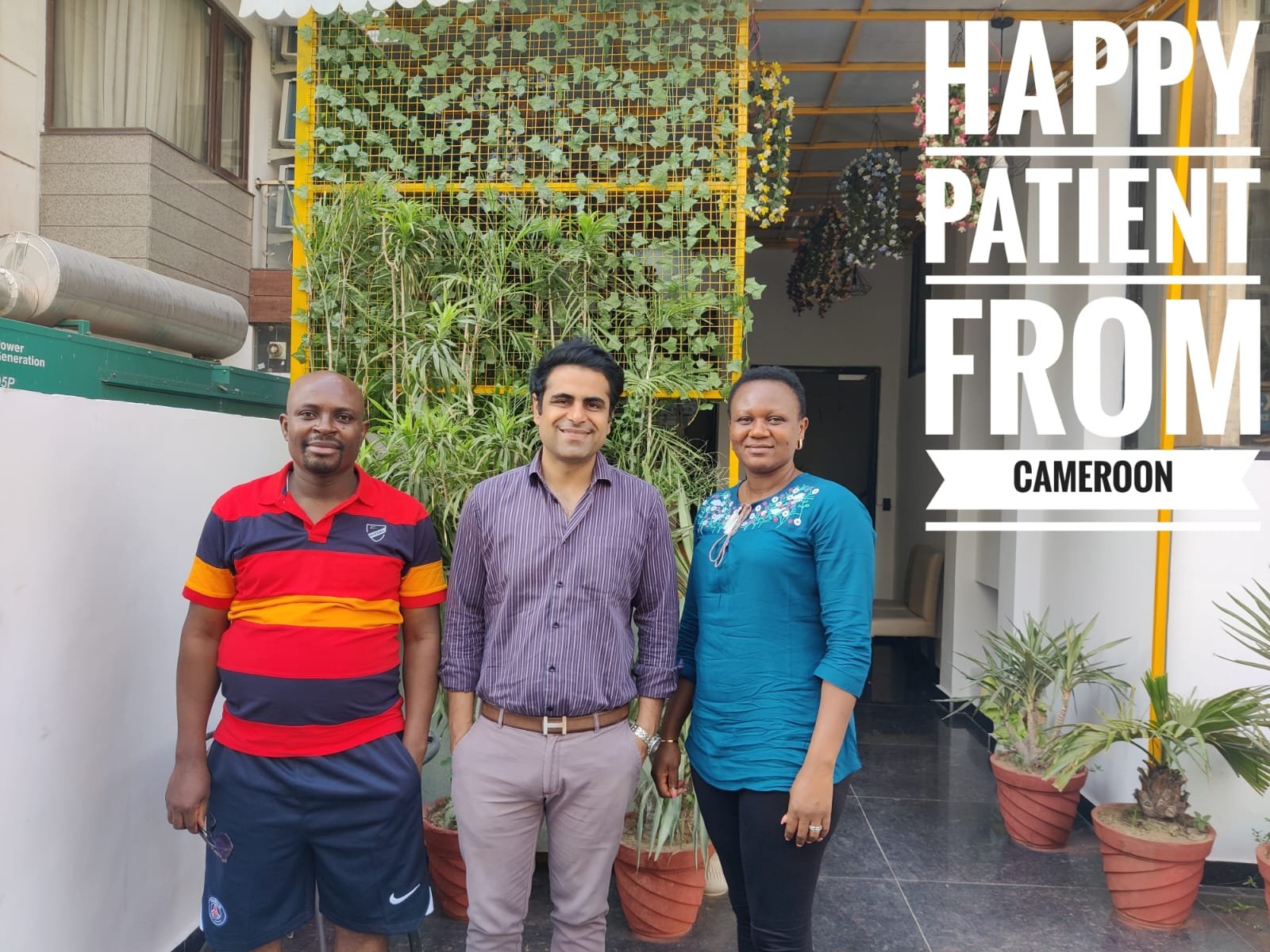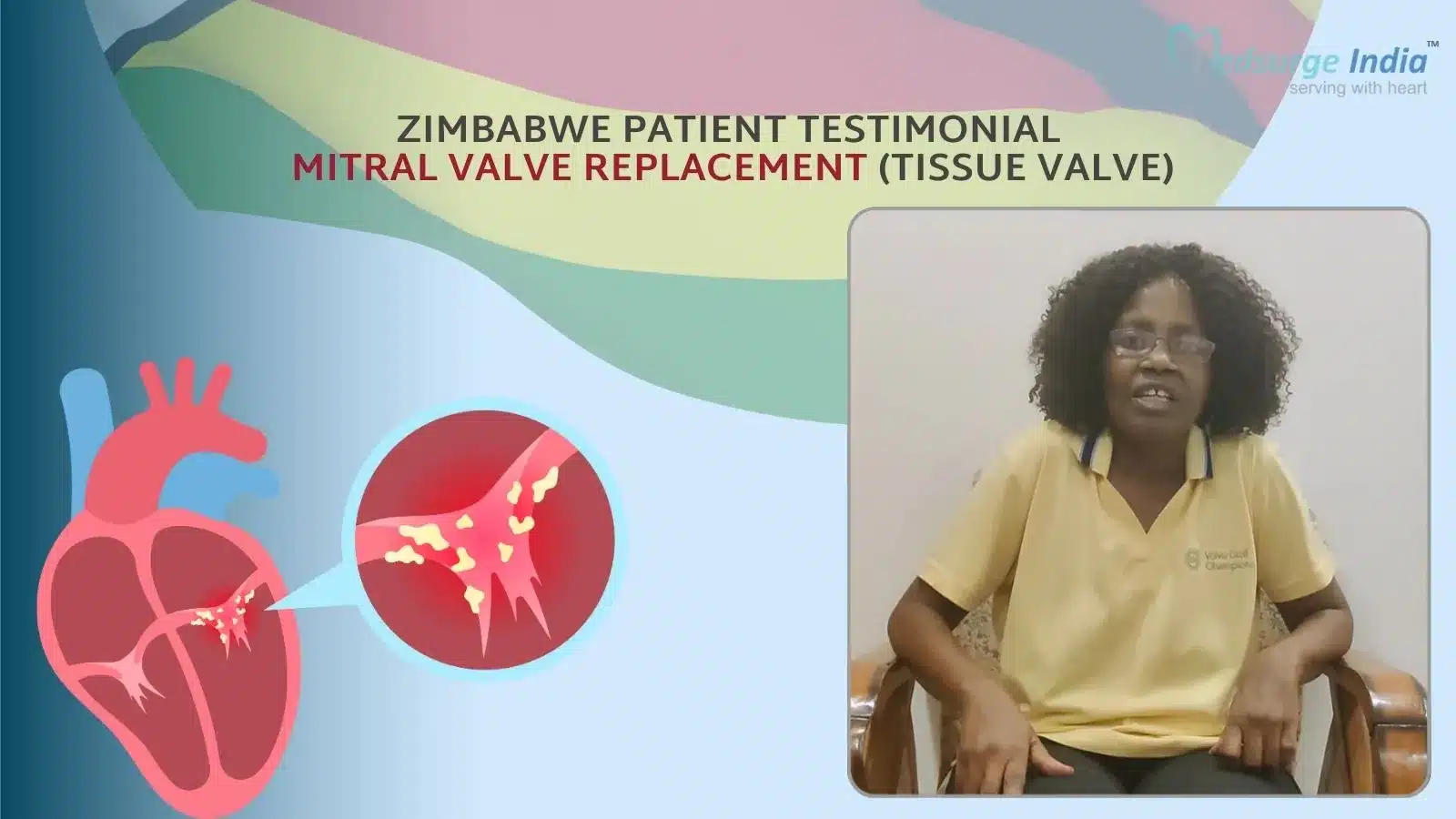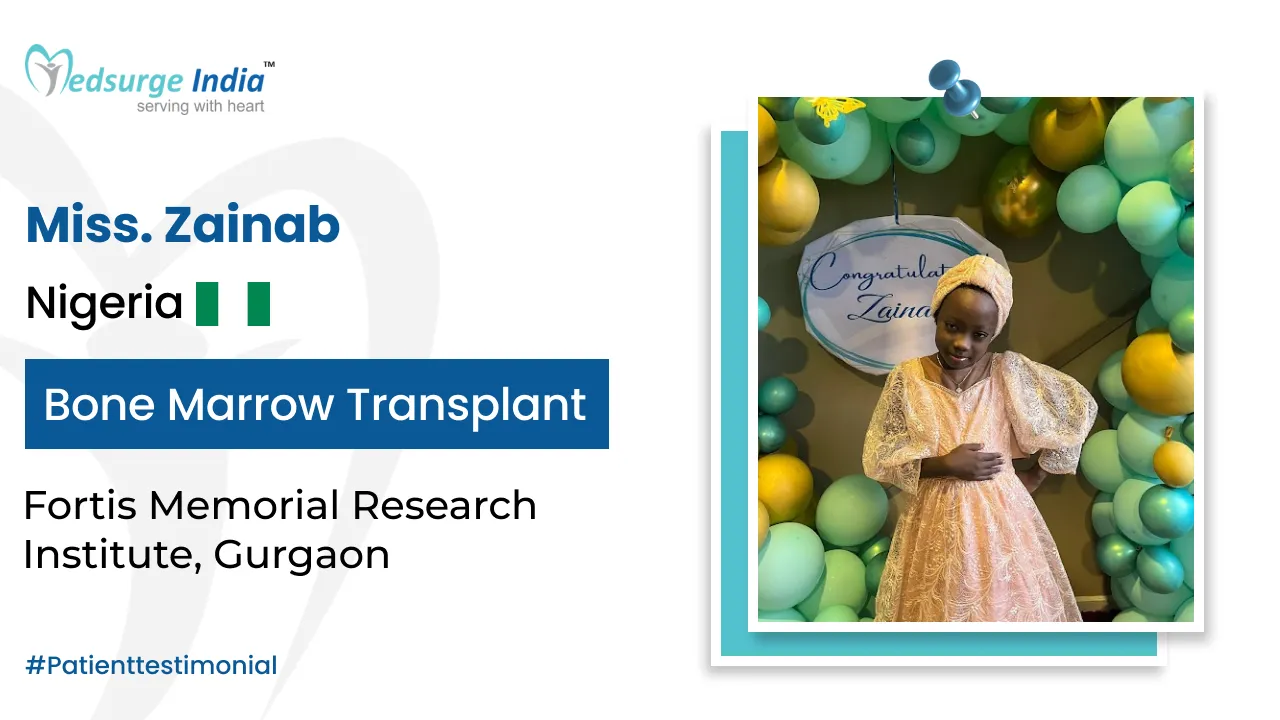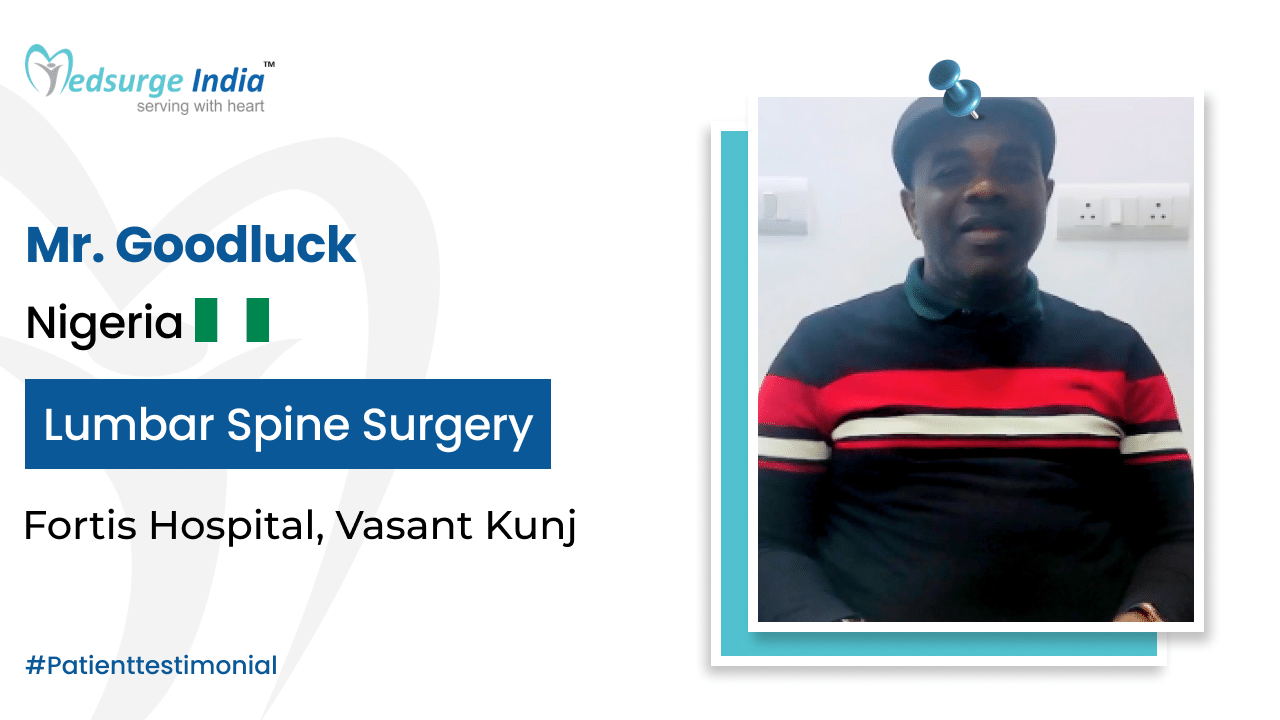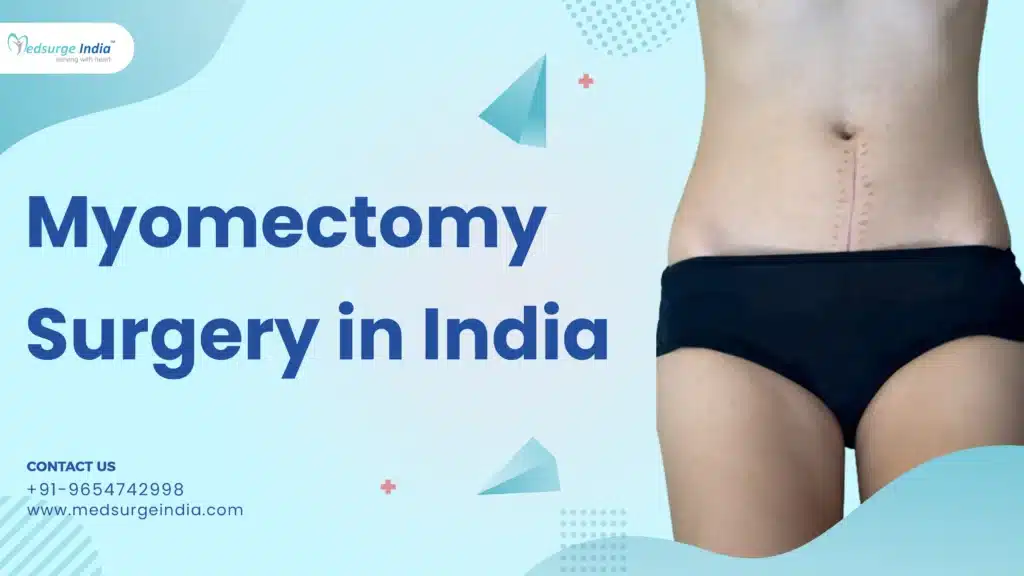
A myomectomy is a surgical intervention aimed at excising uterine fibroids while maintaining the integrity of the uterus. This procedure is frequently advised for women suffering from symptoms like excessive menstrual bleeding, pelvic discomfort, and fertility challenges linked to uterine fibroids.
The cost of myomectomy surgery in India is significantly lower than in other leading countries known for their high-quality medical services. This page will explore the expenses associated with myomectomy surgery in India and the various factors influencing myomectomy surgery cost in India.
Myomectomy Surgery Cost in India
Myomectomy Surgery Cost in India can range from 970 USD to 4800 USD. The cost of myomectomy surgery in India varies depending on the type of procedure, the hospital, the surgeon’s fees, and other factors. Here are some average costs for different types of myomectomy surgery:
- Abdominal myomectomy: Starting from $1,200 to $2,000.
- Hysteroscopic myomectomy: Starting from $750 to $1,250.
- Robotic myomectomy: Starting from $2,800 to $4,700.
- Laparoscopic myomectomy: Starting from $1,800 to $3,000.
Myomectomy Surgery Cost in India Vs Other Countries
| Countries | Price |
| India | $1,200 to $4,700 |
| United State | $10,000 to $15,000 |
| United Kingdom | $7,000 to $10,000 |
| Australia | $8,000 to $12,000 |
| Russia | $5,000 to $8,000 |
Key Factors Which Can Affect Myomectomy Surgery Cost in India
Myomectomy surgery cost in India can vary significantly depending on several factors, including:
- Type of surgery: The type of surgery, such as abdominal, hysteroscopic, or laparoscopic, can affect myomectomy surgery cost in India.
- Surgical facility: The cost can be affected by the facility’s accreditation, location, and the expertise of the medical staff.
- Surgeon’s fees: The fees of the surgeon and anesthetist can contribute to the cost of myomectomy surgery in India.
- Pre- and post-operative care: The cost of pre-operative consultations, diagnostic tests, hospital stays, anesthesia fees, and follow-up appointments can all contribute to the cost of myomectomy surgery in India.
- Insurance: Whether you use insurance, the type of insurance, or if you pay for the surgery out of pocket can affect the cost of myomectomy surgery in India.
- The severity of the condition: The severity of the condition can affect myomectomy surgery cost in India.
Myomectomy is a procedure that removes fibroids while preserving the uterus. It’s usually less expensive than a hysterectomy, which involves removing the uterus. Most health insurance and medical plans cover myomectomy, but there are some exceptions.
What is Myomectomy?
A myomectomy is a surgical procedure aimed at excising uterine fibroids, also referred to as leiomyomas, from the uterus. These fibroids consist of muscle cells and connective tissue and can develop either within or on the exterior of the uterus. They are typically non-cancerous (benign) and can range from a single fibroid to multiple ones, varying in size. During the myomectomy, the surgeon focuses on removing the fibroids while ensuring that the surrounding uterine tissue is preserved, allowing for the possibility of future pregnancies.
This procedure serves as an alternative to a hysterectomy, which involves the removal of the uterus, cervix, and fibroids.
Who Needs Myomectomy Treatment?
Myomectomy procedures and their various types are advised under the following circumstances:
- Women diagnosed with multiple uterine fibroids.
- Experiencing chronic vaginal bleeding and significant pelvic discomfort.
- Women wishing to preserve their uterus for potential future pregnancies.
- Presence of multiple larger fibroids located within the uterine wall.
- Relatively smaller and fewer fibroids that are difficult to identify and access.
- Very small fibroids are located within the uterine cavity.
What are the Different Types of Myomectomies?
There are various types of myomectomy, which include:
Abdominal myomectomy
This is a conventional open surgery where the surgeon makes an incision in the lower abdomen to excise fibroids. The recovery period typically lasts about four to six weeks.
Laparoscopic myomectomy
This technique is minimally invasive, involving a small incision near the navel through which a laparoscope is inserted to remove fibroids. Recovery generally takes around two to four weeks.
Robotic myomectomy
This method is akin to laparoscopic myomectomy, but the surgeon operates robotic instruments from a console located away from the patient.
Hysteroscopic myomectomy
This is the least invasive option, resulting in no scarring and a quick recovery time of approximately two to three days.
The appropriate type of myomectomy for an individual is determined by various factors, including the size, number, and location of the fibroids. A myomectomy, also referred to as a fibroidectomy, is a surgical intervention aimed at removing uterine fibroids while preserving the uterus and a woman’s ability to conceive, in contrast to a hysterectomy.
Who is a Good Candidate for Myomectomy Surgery?
Myomectomy is done for women with fibroid conditions who wish to conceive in the future or have other reasons that would warrant them to retain the uterus.
Unlike a hysterectomy where the whole large muscle from where fibroids grow, the Fallopian tube is removed myomectomy operation removes only the fibroids and does not leave your whole uterus. This facilitates your attempt for children in the future. The type of myomectomy your doctor recommends depends on the size and location of your fibroids:
- Abdominal myomectomy is for you if you have many fibroids or huge ones that are located in the wall of your uterus.
- Laparoscopic myomectomy seems to be superior where you have relatively small and few fibroids.
- Hysteroscopic myomectomy may be suitable for you If your fibroids are small and located within the uterine cavity.
Know More:- Best Urology Hospitals in India
How Myomectomy Surgery is Perform?
Your surgeon may select one of three surgical methods for myomectomy based on the size, quantity, and position of your fibroids.
- Abdominal myomectomy: In an abdominal myomectomy (laparotomy), the surgeon creates an open incision in the abdomen to reach the uterus and excise the fibroids. Typically, a low, horizontal incision, often referred to as a “bikini line” incision, is preferred when feasible. However, larger uteruses may necessitate vertical incisions.
- Laparoscopic or robotic myomectomy: Laparoscopic and robotic myomectomies are both minimally invasive techniques where the surgeon removes fibroids through several small incisions in the abdomen.
Women who undergo laparoscopic procedures generally experience less blood loss, shorter hospital stays, quicker recovery times, and lower rates of complications and adhesion formation compared to those who have a laparotomy. There is limited data comparing laparoscopic and robotic myomectomy; however, robotic surgery may require more time and be more expensive, with few notable differences in outcomes reported.
- Laparoscopic myomectomy involves your surgeon making a small incision near your belly button. A laparoscope, which is a slender tube equipped with a camera, is then inserted into your abdomen. The surgeon utilizes instruments that are introduced through additional small incisions in the abdominal wall to carry out the procedure.
- In robotic myomectomy, the surgeon also uses small incisions similar to those in laparoscopic myomectomy but operates the instruments from a separate console. Some surgeons are now performing single-port laparoscopic and robotic myomectomies, which involve only one incision.
In certain cases, the fibroid may be fragmented (morcellation) and extracted through a small incision in the abdominal wall. Alternatively, the fibroid can be removed through a larger incision in the abdomen to avoid cutting it into pieces. In rare instances, the fibroid may be extracted through a vaginal incision (colpotomy).
Hysteroscopic Myomectomy
For the treatment of smaller fibroids that protrude significantly into the uterine cavity (submucosal fibroids), your surgeon may recommend a hysteroscopic myomectomy. This procedure involves the removal of fibroids through instruments that are inserted via the vagina and cervix into the uterus.
The typical steps of a hysteroscopic myomectomy include:
- The surgeon introduces a small, illuminated instrument through the vagina and cervix into the uterus. They will typically utilize either a wire loop resectoscope, which employs electrical energy to excise tissue, or a hysteroscopic morcellator, which manually cuts the fibroid with a blade.
- A clear fluid, often a sterile saline solution, is infused into the uterus to enlarge the uterine cavity, facilitating a thorough examination of the uterine walls.
- Using the resectoscope or hysteroscopic morcellator, the surgeon carefully removes sections of the fibroid, continuing until the entire fibroid is excised. In some cases, if the fibroid is particularly large, complete removal may not be achievable in a single procedure, necessitating a follow-up surgery.
Advantages of Myomectomy Surgery
- Significant alleviation of discomfort.
- Eliminates the persistent urge to urinate.
- Decreases irregular vaginal fluid secretion.
- Reduces chronic abdominal swelling.
- Nearly complete resolution of lower back pain.
- Relief from pain experienced during urination.
- Helps stabilize hormonal fluctuations and menstrual irregularities.
- Offers relief from pelvic pressure.
- Addresses concerns related to fertility post-surgery.
Know More:- Top Urologist in India
Why Do Individuals Prefer to Have Myomectomy Surgery in India?
Myomectomy surgery in India is increasingly favored for its affordability, providing high-quality medical care at a significantly lower cost than in Western nations. Patients have access to state-of-the-art healthcare facilities staffed by highly skilled surgeons who specialize in minimally invasive procedures, including laparoscopic and robotic myomectomy. The competitive pricing of myomectomy surgery in India, along with the presence of internationally accredited hospitals and tailored patient care, positions the country as a compelling option for individuals seeking effective treatment for uterine fibroids.
How Can Medsurge India Help?
Medsurge India serves as a distinguished support network for patients seeking medical professionals, healthcare institutions, and specialized therapies. Our team is dedicated to providing you with a curated list of accredited, reputable, and reliable doctors and medical facilities tailored to your specific health requirements. Additionally, we develop a treatment plan that aligns with your financial considerations and assists patients in securing travel authorizations, medical visas, and various other essential services.
Get Free Cost Estimation
The Most Important Frequently Asked Questions
Q: Is Surgery Involving Myomectomy High Risk?
A: Although myomectomy is usually regarded as a safe technique, there are always hazards associated with surgery. Each person has a different level of danger. Bleeding, infection, or harm to adjacent organs are common hazards. Depending on your general state of health, your doctor will go over these risks with you.
Q: After My Laparoscopic Myomectomy, Can I Return to Work?
A: Following a laparoscopic myomectomy, you could require a period of time off work to heal. People can usually resume light work in a week or two. That is contingent upon the specifics of your occupation and the post-operative recovery from the surgery. You can get specific advice from your doctor regarding when you can go back to work.
Q: Does a Myomectomy Hurt a Lot?
A: Although a myomectomy may be uncomfortable, there are ways to minimize your pain both during and after the surgery. Less pain and a speedier recovery are common outcomes of minimally invasive procedures. Therefore, the medical staff can talk about pain management choices and offer advice on how to manage any discomfort.
Top Hospitals for Myomectomy Surgery in India
Top Doctors for Urology Treatment
Dr. Nishant Kathale
Consultant
Experience: 10 years of experience
Reliance Hospital, Navi Mumbai
Mumbai, India
Dr. Prajwal P Ravinder
Senior Consultant
Experience: 25+ years of experience
KMC Hospital, Hampankatta, Mangaluru
Mangaluru, India
Dr. Jayaprakasha G
Experience: 28+ years of experience
Jindal Sanjeevani Multispeciality Hospital, Bellary
Bellary, India
Dr. Shrikant Badwe
Consultant
Experience: 39 years of experience
Nanavati Super Specialty Hospital Mumbai
Mumbai, India
Dr. M. R. Pari
Consultant
Experience: 24 years of experience
Apollo Specialty Hospital, OMR
Chennai, India
Dr. Anant Kumar
Chairman
Experience: 31 years of experience
Max Super Speciality Hospital, Vaishali
New Delhi , India
Dr. Pradeep Bansal
Senior Consultant MBBS, MS, MCh
Experience: 21 years of experience
Gurgaon, India
Dr. Saurabh Ramesh Patil
Consultant
Experience: 10 years of experience
Fortis Hospital, Mulund, Mumbai
Mumbai, India
Dr. Sachin Pahade
Consultant
Experience: 15 years of experience
Nanavati Super Specialty Hospital Mumbai
Mumbai, India
Dr. Akhileshwar Jha
Senior Consultant
Experience: 49 years of experience
Marengo Asia Hospitals Formerly W Pratiksha Hospital, Gurgaon
Gurgaon, India
Dr. R. L. Nayak
Consultant
Experience: 24 Years
Ferticity Fertility Clinic, New Delhi
New Delhi, India
Dr. Prasun Ghosh
Endourologist Associate Director
Experience: 22 years of experience
Medanta – The Medicity, Gurgaon
Gurgaon, India
Dr. Pratap Bahadur Singh
Director
Experience: 28 years of experience
Max Super Speciality Hospital, Patparganj, New Delhi
New Delhi, India
Dr. Nagesha S
Senior Consultant
Experience: 10+ years of experience
Narayana Multispeciality Hospital, R S Naidu Nagar, Mysore
Mysore, India

